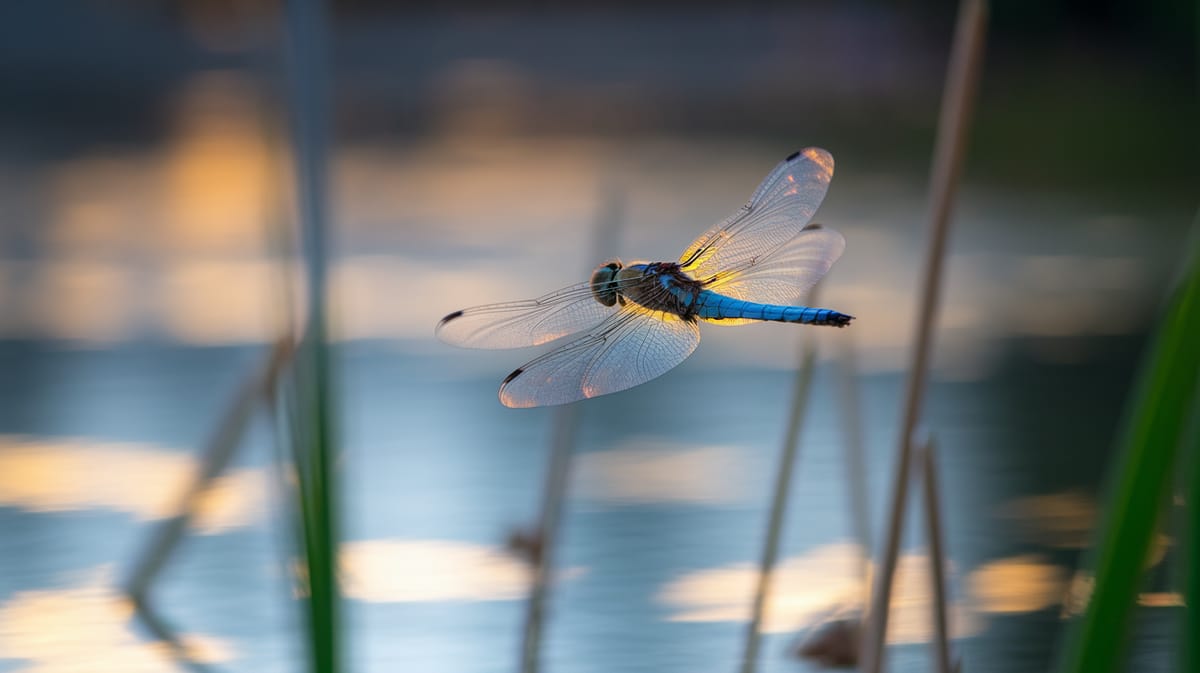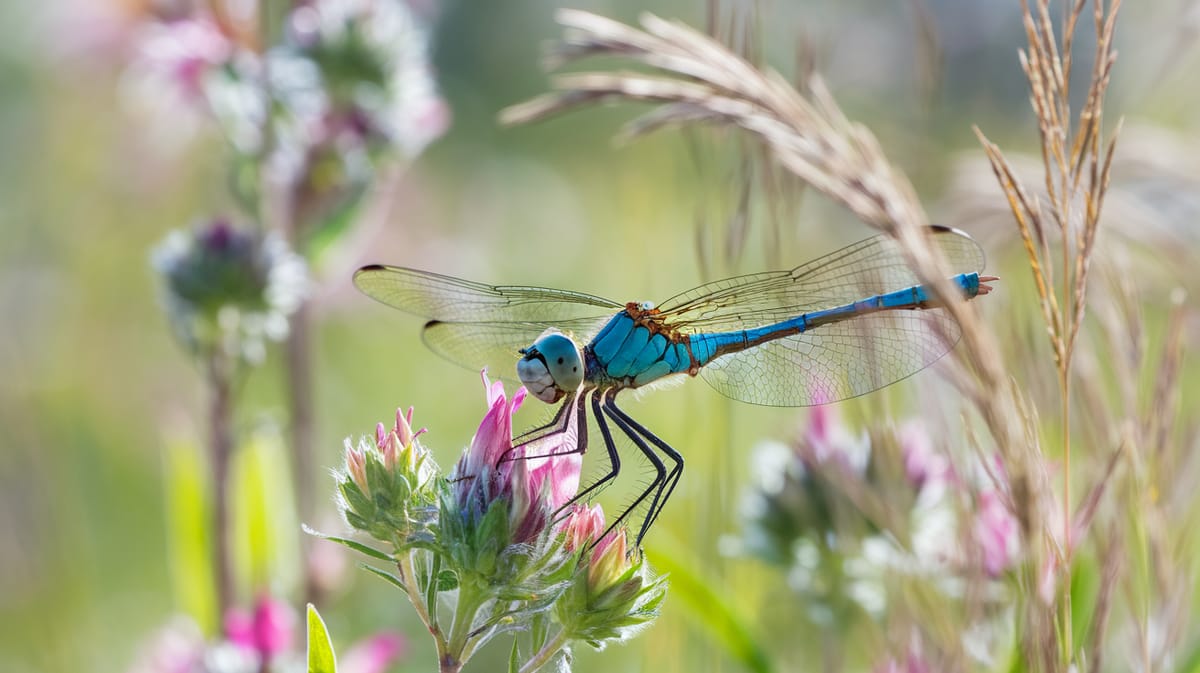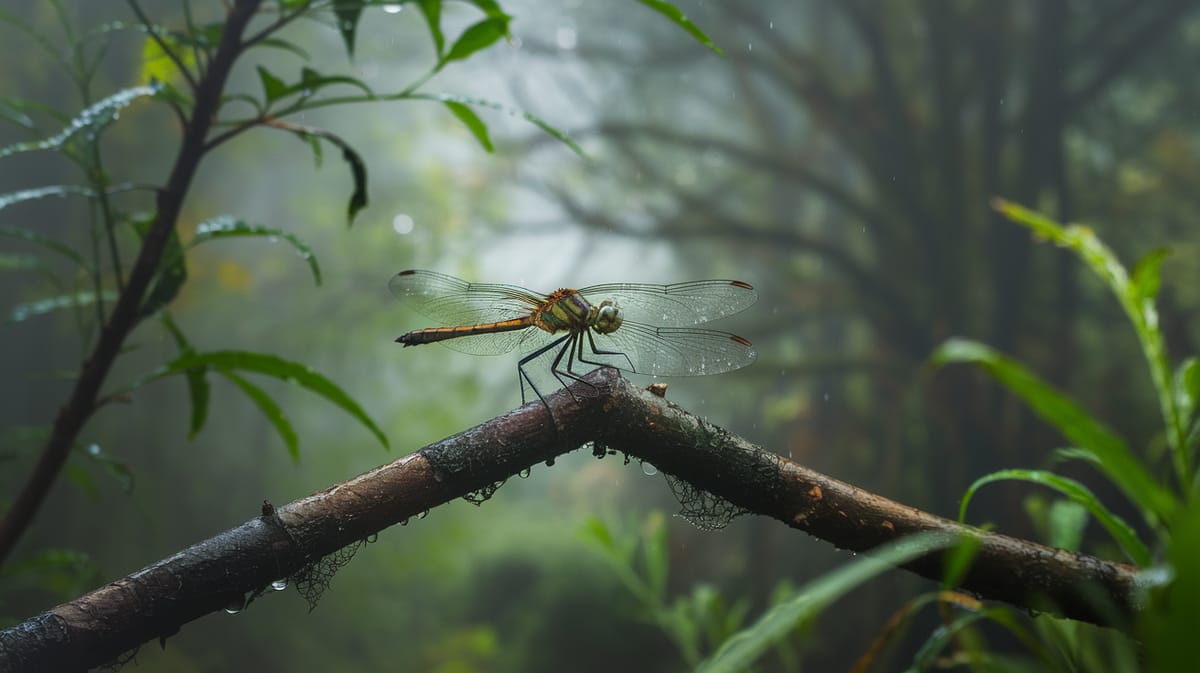Dragonfly
Aerial acrobat and vibrant predator, the dragonfly commands the skies with unmatched agility and grace. Vital to ecosystems, it controls insect populations and indicates healthy environments.

Key Insights at a Glance
Did You Know?
Taxonomy & Classification
Dragonflies are aerial hunters with extraordinary flight capabilities and compound eyes, making them adept at catching prey mid-air. Let's understand the evolutionary journey and classification of these remarkable predators.
Global Reach
Dragonflies, with over 5,000 species across various genera, inhabit every continent except Antarctica, showcasing their adaptability to diverse environments.
Ancient Survivors
Originating around 300 million years ago, dragonflies have endured through major extinction events, retaining key predatory adaptations over time.
Lifecycle and Growth
A remarkable journey of transformation from Egg to Adult.
Egg
Laid in or near water, dragonfly eggs hatch into larvae, beginning their journey in aquatic habitats.
Nymph
Nymphs live underwater, using extendable jaws to catch prey, undergoing multiple molts before maturing.
Adult
Adults leave the water, develop wings, and exhibit agile flight, focusing on reproduction and feeding.
Dietary Habits
A skilled predator with agile hunting abilities, it adapts its diet to include insects, larvae, and opportunistic prey.
| DIET TYPE | DESCRIPTION |
|---|---|
| Primary Diet | Feeds mainly on mosquitoes, flies, and midges, capturing prey mid-air with precise aerial maneuvers. |
| Secondary Diet | Consumes moths, butterflies, and small beetles less frequently but remains crucial to its dietary needs. |
| Occasional | Rarely preys on small fish or tadpoles, displaying opportunistic feeding behavior in specific situations. |

Behaviour and Adaptations
Discover the exceptional traits that make the Dragonfly a master of flight and hunting.
Aerial Agility
Superior flying skills allow swift maneuvers in all directions.
Precision Hunting
Excellent eyesight aids in targeting and capturing prey mid-air.
Rapid Flight
Capable of reaching speeds up to 35 mph to chase or escape.
Ecosystem Impact
Dragonflies play crucial roles in sustaining ecological harmony.
Natural Pest Control
Dragonflies consume large quantities of mosquitoes and other pests, reducing their populations significantly.
Food Chain Link
As both predator and prey, dragonflies serve as a key species in aquatic and terrestrial food webs.
Pollination Assistants
Dragonflies contribute to pollination as they visit flowers while hunting.
Conservation Challenges
Conservation Challenges: Understanding and addressing the major threats to Dragonfly populations.
Habitat Loss
Wetland destruction and urbanization lead to significant declines in dragonfly habitats.
Water Pollution
Contaminants in water bodies harm dragonfly larvae and reduce adult populations.
Climate Change
Altered weather patterns affect dragonfly breeding and migration.
Frequently Asked Questions
How long do Dragonfly live?
Dragonflies can live anywhere from a few weeks to several months, depending on factors like species and environmental conditions. Their life cycle includes a lengthy aquatic nymph stage, which can last up to several years, before they emerge as adults.
What do Dragonfly eat?
Dragonflies are carnivorous and primarily eat other insects. They feed on mosquitoes, flies, bees, ants, and even butterflies. Dragonflies catch their prey in flight, using their excellent eyesight and agile flying skills to hunt efficiently.
Are Dragonfly poisonous?
Dragonflies are not poisonous to humans. They do not sting or transmit diseases. While they are predators of smaller insects, they pose no harm to people and are considered beneficial for controlling mosquito populations.
Are Dragonfly endangered?
While some dragonfly species are considered at risk due to habitat loss and pollution, most are not endangered. Conservation efforts focus on preserving wetland habitats, which are crucial for the survival of many dragonfly species.
What do Dragonfly symbolize?
Dragonflies often symbolize change, transformation, adaptability, and self-realization. In various cultures, they are seen as symbols of light and joy, representing the beauty and diversity of nature.
Do Dragonfly bite?
Dragonflies are capable of biting, but they do not do so unless provoked or handled. Their bite is not harmful to humans, as they lack venom and their mandibles are not strong enough to cause significant injury.
What color are Dragonfly?
Dragonflies come in a variety of colors, including blue, green, red, yellow, and black. Their vibrant colors can change depending on age, sex, and species, often displaying iridescent or metallic hues.
Does a Dragonfly have wings?
Yes, dragonflies have two pairs of strong, transparent wings. Their wings are capable of rapid and agile flight, allowing them to hover, fly backward, and change direction quickly, making them excellent hunters.
What does a Dragonfly look like?
Dragonflies have elongated bodies, large multifaceted eyes, and two pairs of transparent wings. They have slender, elongated abdomens and vary in color depending on the species, often exhibiting bright or metallic shades.
Is a Dragonfly an insect?
Yes, dragonflies are insects. They belong to the order Odonata and are characterized by their long bodies, large eyes, and two pairs of wings. They are one of the oldest groups of flying insects, with a history dating back over 300 million years.
Related Insects
Discover insects with similar characteristics to Dragonfly - including shared habitats, diets, and taxonomic classifications
Share this profile
Help others discover Dragonfly
